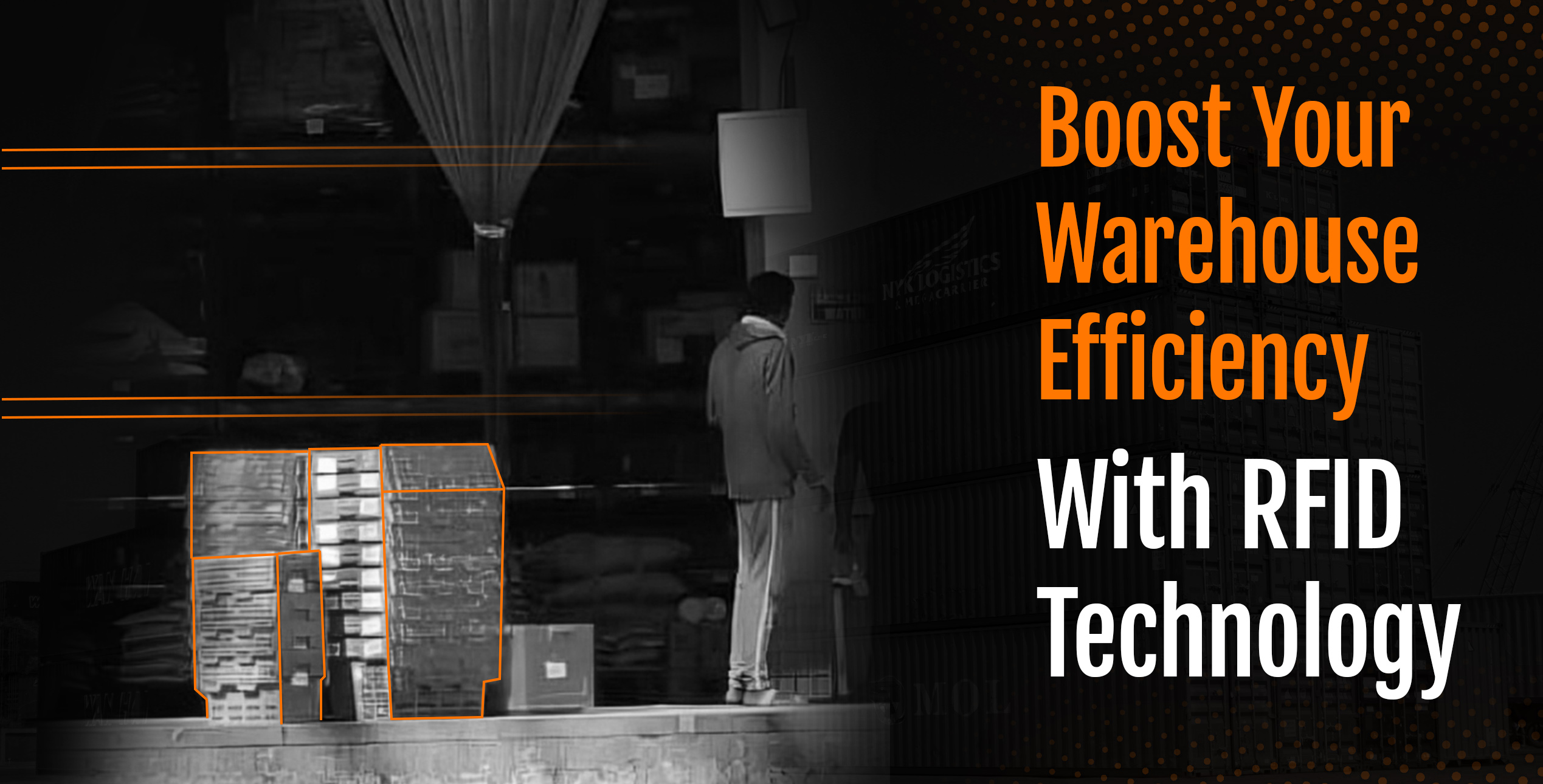The warehousing industry is evolving rapidly, driven by the need for greater efficiency and accuracy in managing inventory. One technology leading this transformation is Radio Frequency Identification (RFID). While RFID has been discussed for years as a game-changer, only recently has it become an accessible and practical tool for revolutionizing warehouse operations due to reduced costs of manufacturing and implementation.
This blog explores how RFID technology is reshaping the warehousing industry by addressing pain points, offering innovative solutions, and delivering measurable benefits. From inventory control to labor cost reduction, we’ll uncover how RFID can boost efficiency in your warehouse operations. Finally, we’ll answer your most pressing questions about RFID technology.
Pain Points in Traditional Warehousing
Warehouses face a range of challenges that hinder efficiency and profitability, including:
- Manual Errors in Inventory Tracking: Barcode scanning relies heavily on human accuracy, making it prone to mistakes.
- Time-Consuming Processes: Traditional inventory management methods demand significant time and labor.
- Limited Visibility: Locating the presence of items or pallets across warehouses and manufacturing sites can be cumbersome and time-intensive.
- High Labor Costs: Manual workflows require more personnel, increasing operational costs.
How RFID Technology Solves These Pain Points
RFID technology offers transformative solutions to these challenges by automating and streamlining critical processes. Here’s how:
- Eliminating Manual Scanning Errors: Unlike barcodes, RFID tags communicate wirelessly with readers, without line of sight, reducing the likelihood of human error.
- Faster Data Collection: RFID readers can scan multiple tags simultaneously from up to 30 feet away, drastically cutting inventory tracking times.
- Improved Visibility: RFID systems provide real-time updates on item location movement from gates and docks, enabling precise inventory management.
- Reduced Labor Dependence: Automated RFID workflows free up personnel for higher-value tasks, lowering operational expenses.
Benefits of RFID Technology in Warehousing
1. Enhanced Inventory Control
RFID technology captures SKU-level inventory data with 99% accuracy, significantly improving from the 63% average accuracy achieved with barcodes. Real-time updates ensure you always know stock levels, enabling better replenishment planning and reducing stockouts.
2. Improved Workflow Automation
RFID allows for seamless automation of receiving, shipping, and cycle counts. Fixed RFID readers can monitor inventory movements without manual intervention, enhancing efficiency across all processes.
3. Cost Savings and Productivity Gains
RFID can reduce inventory cycle count times by 96% and improve receiving times by 90%. Such efficiency gains translate into significant cost savings and faster order fulfillment.
4. Accurate Stock Management
Advanced RFID tags enable real-time monitoring of stock levels, even for products with complex requirements like expiration dates or temperature sensitivities.
Also Read: How to balance overstocking with Stockouts?
5. Asset Tracking and Loss Prevention
RFID systems can track inventory and critical warehouse assets like forklifts and IT equipment. This helps prevent losses and optimizes asset utilization.
Key Features of RFID Technology
- No Line of Sight Required: RFID tags can be read even if they’re not visible to the antenna.
- Simultaneous Reading: Readers can process multiple tags in one scan, saving time.
- Robust in Harsh Environments: RFID solutions perform reliably indoors and outdoors, even under challenging conditions.
Conclusion
RFID technology is no longer a luxury but a necessity. RFID empowers warehouses to stay competitive in the on-demand economy by addressing common pain points and delivering unmatched efficiency. If you’re ready to transform your operations, now is the time to explore RFID and unlock its full potential.
Contact us to learn how we can help you transform your warehouse efficiency with RFID technology.
FAQs About RFID in Warehousing
- What is RFID, and how does it work?
RFID uses radio waves to transmit data from a tag to a reader. Each tag contains a unique identifier linked to a database.
- How does RFID differ from barcodes?
Unlike barcodes, RFID doesn’t require line-of-sight scanning and can read multiple tags simultaneously.
- Is RFID expensive to implement?
While the initial investment is higher than barcode systems, RFID delivers a fast ROI through labor savings and efficiency gains.
- Can RFID work in cold storage or outdoor environments?
Yes, RFID tags and readers are designed to operate in various environments, including cold storage and outdoor facilities.
- What types of data can RFID tags store?
RFID tags can store detailed information such as SKU numbers, batch numbers, and environmental conditions like temperature.
- Do RFID systems require specialized software?
Yes, RFID systems typically integrate with Warehouse Management Systems (WMS) or Enterprise Resource Planning (ERP) software for seamless operations.
- What’s the range of an RFID reader?
RFID reader ranges vary from a few inches to over 30 feet, depending on the tag and reader type.
- How does RFID improve accuracy in inventory management?
By automating data capture, RFID eliminates human errors associated with manual barcode scanning.
- Can RFID track the movement of goods between facilities?
RFID systems can monitor items as they move through different zones or between warehouses.
- What support is available for RFID implementation?
Working with an experienced provider ensures proper system design, testing, deployment, and ongoing support.

